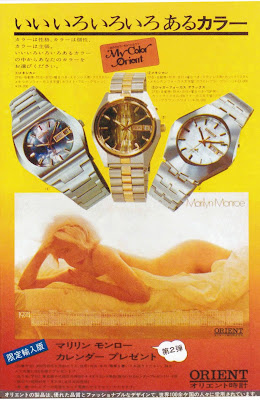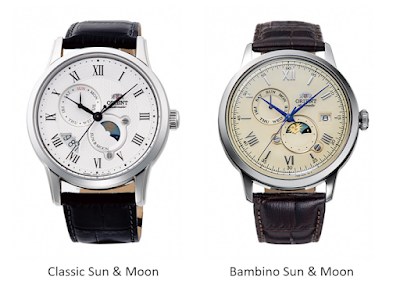Another year is ending, and 2024 is just around the corner. In what has
become a tradition here on Orient Place blog, it is time for our annual summary
post!
First, a retrospective look at this year's releases. To be honest, we
saw nothing particularly revolutionary or surprising; however, the same can be
said for the entire watchmaking industry, so Orient is not exceptional in this
sense.
Yet, while the brand seemed more focused on expanding its online stores
across global markets, it did introduce some decent models. Particularly in the
higher end of the Orient Star range, in the "M
collection", we saw a number of attractive designs. Still,
somehow my yearly podium ended up housing three less flamboyant models.
In third place, representing nothing more than my personal, totally
subjective selection, is the M34
Avantgarde F8 Skeleton. It ain't the prettiest watch the brand ever
made, but as far as sharp-edged industrial designs go, this one checks all the
boxes. Add the new F8F64 caliber that brings Orient's silicon escapement
to the masses (well, more masses than the $3K 70 hour version…) and you get a
very interesting watch with a properly modern movement.
The second place in my opinion goes to the much talked about Mako
40. A more than capable watch that's highly wearable and offers a
very compelling package; plenty of value for money and a good new size for a
modern diver. If only it wasn't for that weird issue with the minute markers
(which new production runs have probably gotten fixed by now), and if the crown
was a little bigger and offered finer operation, this model would have been
perfect, and a first place winner. As it is, it's a close runner-up.
My winner for top Orient of 2023 is perhaps a little unexpected – it is
a watch that did not cause much of a stir, and while I don't have the numbers I
can safely assume it wasn't the biggest seller in the Orient Star range. But
forget all comparisons and judge it by its own merits: a perfectly sized
sports/dive watch with cool, vintage-inspired looks, good specs, lightweight
titanium case and bracelet, high-quality yet subtle finishing: the latest
version of the 1964 2nd edition diver really works as a coherent
design, and perhaps the brand's most solid and versatile new watch.
While Orient's new releases may not have been super-exciting, some of
the old models I added to my collection in 2023 were actually very cool and
satisfying.
The M-Force
Delta was definitely the big winner this year, and became my go-to
watch for when some tough labor (or looks) were required – it is as beautiful
as it is bold. The Retro-Future
Bicycle watch too proved to be a most satisfying find.
The Weekly
Auto AAA with its fluted bezel may seem the more mundane of the lot,
but it too has its charm, and plenty of nice little details. And then there was
the Fineness,
with its deceivingly simple looks – perhaps a bit too small and delicate for
daily wear, but its history and subtle sophistication make it a lovely addition
to the collection.
Last but not least is the very unusual Orient Star "Sky
Sports" World Timer. No, you haven't read about this one on the blog yet…
I should give it some more wrist time, hoping to post a review in January.
My previous year-end
post, twelve months ago, concluded with four wishes – of which
Orient did deliver on one (making the brand's online stores accessible in
global markets), but did not see eye to eye with my other wishes (specifically
for a new 300m diver, and a new GMT movement).
So let me repeat those wishes for 2024, and of course – also wish all
blog readers and followers, their families and friends, a happy holiday season, and a peaceful
and prosperous new year!




















































